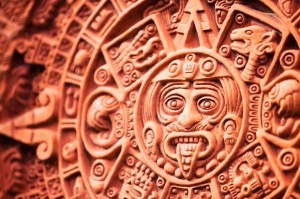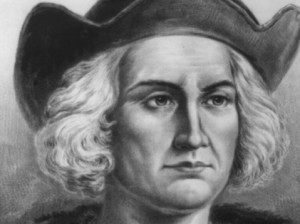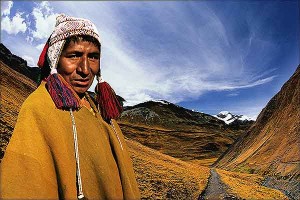The History of Spanish: Part Two
Posted on October 29th, 2013 by Samuel Max in Uncategorized | No Comments »
I finished last week after the Castilian forces fought back and reclaimed the Iberian Peninsula, and established the Spanish language as the official tongue in the area. Now let’s continue on this journey across the Atlantic Ocean with a fellow known as Christopher Columbus, to the Americas, and the continued evolution of the Spanish language.
Christopher Columbus was born in 1451, in what is present day Italy, and led the Spanish colonization of the New World. Originally he set out to find a new route to the Asian Indies, and though he believed he had found it, he actually landed upon the Americas.
Columbus made four trips to the Americas, as the Spanish made settlements on islands within the Caribbean. Upon his fourth and final trip to what is now Honduras in 1502, Columbus found a giant canoe filled with goods, and after taking what he wanted, also found himself a person to take prisoner, which happened to be the first encounter with the American natives.
During the following years the Spanish continued taking the land, the Natives lacked the necessary ability to stop them, and were shrinking in numbers rapidly due to the spread of smallpox, influenza, measles and typhus that spread with the Spaniards arrival. The Spanish forced Christianity upon the Americans, and to a lesser extent, the Spanish language; however, the natives mostly retained their own languages, such as Quechua, Nahuatl and Guarani, which even became acceptable within the Catholic Church.
Quechua, Nahuatl, Mayan and Guarani were only a fraction of the languages that existed before the arrival and colonization of the Spaniards, yet it is these languages that have had the most influence on the Spanish and English that we speak today.
Nahuatl was the language of the Aztecs, and is still spoken today by an estimated 1.5 million Nahua people, most of which live in Central Mexico. The Nahuatl language has a number of words that are now present in Spanish, English and many other languages, such as: “avocado,” “chili,” “chocolate,” “coyote,” and “tomato.”
The Guarani language is spoken by the Guarani people, with a little under 5 million native speakers. It is an odd language in that it is spoken by many non-indigenous people, which is very uncommon considering the shift to European colonial languages. Many Guarani words are used in Portuguese, and English has gone on to borrow several from this, including “Jaguar,” “piranha,” “tapioca,” and “capoeira.” Also, Paraguay and Uruguay are Guarani words.
Quechua, which is the language of the Incas, have lent words like “coca,” “condor,” “llama,” “pampa,” “puma,” and “quinoa.” It also has had a large influence on the Spanish within Latin America, with the words “papa” for potato, “chuchaqui” for hangover in Ecuador, and the Bolivian “sorojchi,” meaning altitude sickness.

Lastly, we have the Mayan languages. From the Maya civilization that created the first fully developed written language of the pre-Columbian Americas. The Mayan language has given us shark, which comes directly from ‘xoc,’ meaning fish; also cigar and cigarette, coming from “zikar,” “zik” meaning smoke, and “zikil” being smoked.
Of course it’s not a one-way street, these languages have also taken words from the Spanish vocabulary, but that’s for another day. For now, do you know any other words that have their origin in one of these languages? Can you think of any other important events in the shaping of the Spanish language?






